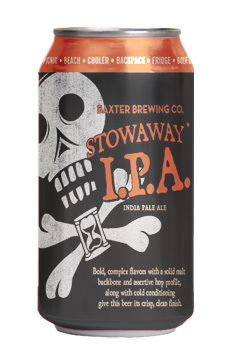What kind of beer is that? The answer can get complicated. There are hundreds, perhaps thousands, of different beer styles. But today, I’m going to offer a primer. It might be informative for casual beer drinkers, and true beer geeks can tell me where I’m wrong.
The first dividing line is between lagers and ales. Lagers are made with yeast that ferments at the bottom of the fermenting vessel and are fermented and conditioned at cooler temperatures. Ales use top-fermenting yeast at warmer temperatures.
The classic lager is Pilsner, originating from Pilsen in the Czech Republic, and spreading to Germany and the rest of Europe. It is usually a light golden color, and is crystal-clear and crisp, with a spicy and often floral hops bitterness. It’s also fairly low in alcohol.
Pilsner is the base on which the American brewing industry was founded. Budweiser is also the name of a Czech beer — available in the United States as Czechvar. A lot of the American lagers have strayed from the original, and are often less hopped and more heavily carbonated.
Malt liquor, light beers, steam beer and a lot of other American variants are all lagers.
The variations of lager go way beyond that. Bock beer is a strong, malty lager usually brewed in spring to signal the end of winter and, according to one theory, to get the monks through the fasts of Lent. Maarzen and Oktoberfest are beers brewed in March that can be drunk during the hot summer months, when brewing was not allowed in Germany. Rauchbier or smoke beer is a lager whose malts are dried over open fire, adding a smoky taste. And schwarzbier is a black lager.
Ales cover more ground — geographically and stylistically. To oversimplify, you have the British styles of brown, pale and porter; Belgian styles including lambic, wheat, pale and dark; and a couple of German ales.
In Britain, pubs traditionally serve mild, bitter and porter. The mild is heavy on the malt with only a little hops, and when it is bottled, it is called brown ale. Bitter has more hops and is similar to pale ale. Porter has a richer flavor, with heavily roasted malts for more color and richness. Stout originally was called stout porter, and was a darker, richer porter.
This is all a spectrum. You can have brown ales that are fairly bitter for a brown, and you can have pale ales that are fairly mild. Some brown ales can get very close to a porter. And with stouts, there are dry stouts like Guinness (yes, it’s Irish, but it is the British Isles) and sweet or milk stouts, which have more sugar left in the brew and a heavier body.
India pale ale, or IPA, is a pale ale that had higher hops, alcohol and malt so it could stand being shipped from England to India. In the United States, this has been translated to an intensely flavored hoppy beer.
Barley wine can be based either on the brown ale or pale ale, but it does have a high alcohol content, as does anything called Imperial.
Belgian ales and their kin are highly complex. They are traditionally unfiltered, and thus cloudy with a lot of yeast in the bottle. Sometimes they are carefully poured to leave the yeast behind, but with wheat beers (sometimes called white ales), a good bartender will make a show of swirling and pouring the beer to pick up the ale and other items on the bottom of the bottle. Dubbel, tripel and quadrupel have more of everything — malt, hops, alcohol and flavor. Like other styles, they can go from light to dark.
Farmhouse or saison ales are similar but a bit more complex, with a tradition that includes France as well as Belgium. Lambics were once made by monks using wild yeast that naturally floats in the air, and they often have fruit added.
Ales are less popular in Germany than lagers. Altbier and kolsch are local German ales. Alts are made with a bottom-fermenting ale yeast but cold-conditioned like a lager. Kolsch is a regional German ale. Like the Belgians, the Germans have several styles of beer featuring wheat as a major ingredient: Hefeweizen, Berliner Weissbier and the like.
So, this is just a rough outline. Entire books have been written on this. If you want more information, go to beeradvocate.com/beer/style.
STOWAWAY IPA: My son-in-law went to RSVP in Portland about noon Sunday to do his Super Bowl shopping and found one six-pack of Baxter Brewing Co.’s Stowaway IPA. This a good, strongly flavored, American-style IPA with 6.9 percent alcohol.
I tasted it after my obligatory pro-Green Bay Schlitz, and the first taste was almost shocking. The hops dominate, but the malt makes its presence felt.
I liked this beer a lot, but I didn’t love it — in comparison with the Pamola Xtra Pale Ale, which I absolutely loved.
Tom Atwell can be contacted at 791-6362 or at:
tatwell@pressherald.com
Copy the Story Link
Send questions/comments to the editors.



Success. Please wait for the page to reload. If the page does not reload within 5 seconds, please refresh the page.
Enter your email and password to access comments.
Hi, to comment on stories you must . This profile is in addition to your subscription and website login.
Already have a commenting profile? .
Invalid username/password.
Please check your email to confirm and complete your registration.
Only subscribers are eligible to post comments. Please subscribe or login first for digital access. Here’s why.
Use the form below to reset your password. When you've submitted your account email, we will send an email with a reset code.